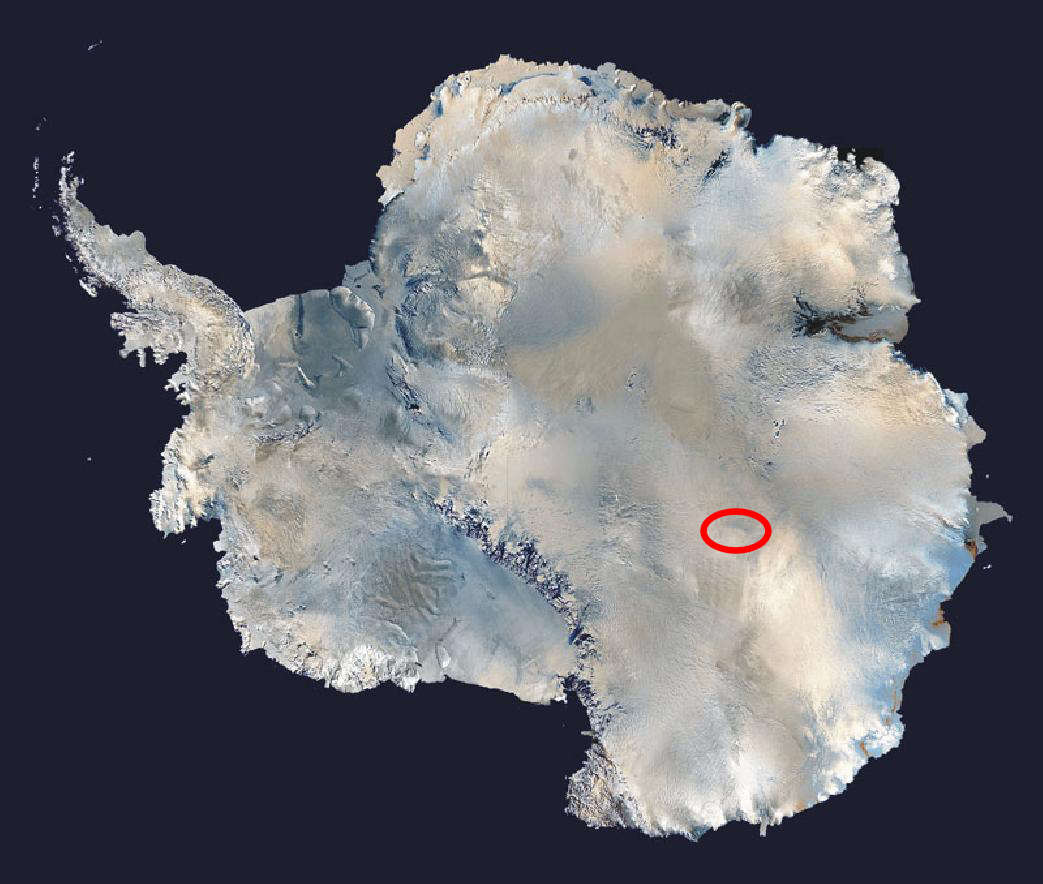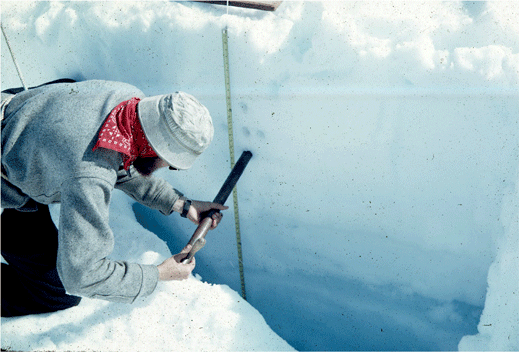|
Ledoyom (Ice Body)
Ledoyom ( rus, ледоём, p=lʲɪdɐˈjom) is a term proposed by the Russian geologist V.P. Nekhoroshev for intermontane depressions which might get completely filled by glaciers from the surrounding mountains at the maxima of glaciation. Information In the 1930s the Russian geologist V.P. Nekhoroshev marked out intermontane depressions in the Altai which might get completely filled by glaciers from the surrounding mountains at the maxima of glaciation. He called such depressions "ledoyoms". The Russian term “''Ledoyom'' (ледоём)” means “body of ice” by analogy with a “body of water” ("vodoyom"). Ledoyoms produced large valley glaciers within outlet runoff valleys from the depressions at culmination stages of their development. Diagnostic marks of the so-called classical ledoyoms are moraines, eskers and kames on the bottoms of the corresponding depressions. In the 80s and 90s the development of the idea by Russian geologist Alexei Rudoy (russian: Алек ... [...More Info...] [...Related Items...] OR: [Wikipedia] [Google] [Baidu] |
Ice Shelf
An ice shelf is a large floating platform of ice that forms where a glacier or ice sheet flows down to a coastline and onto the ocean surface. Ice shelves are only found in Antarctica, Greenland, Northern Canada, and the Russian Arctic. The boundary between the floating ice shelf and the anchor ice (resting on bedrock) that feeds it is the grounding line. The thickness of ice shelves can range from about to . In contrast, sea ice is formed on water, is much thinner (typically less than ), and forms throughout the Arctic Ocean. It is also found in the Southern Ocean around the continent of Antarctica. The movement of ice shelves is principally driven by gravity-induced pressure from the grounded ice. That flow continually moves ice from the grounding line to the seaward front of the shelf. In steady state, about half of Antarctica's ice shelf mass is lost to basal melt and half is lost to calving, but the relative importance of each process varies significantly between ice s ... [...More Info...] [...Related Items...] OR: [Wikipedia] [Google] [Baidu] |
South
South is one of the cardinal directions or Points of the compass, compass points. The direction is the opposite of north and is perpendicular to both east and west. Etymology The word ''south'' comes from Old English ''sūþ'', from earlier Proto-Germanic language, Proto-Germanic ''*sunþaz'' ("south"), possibly related to the same Proto-Indo-European language, Proto-Indo-European root that the word ''sun'' derived from. Some languages describe south in the same way, from the fact that it is the direction of the sun at noon (in the Northern Hemisphere), like Latin meridies 'noon, south' (from medius 'middle' + dies 'day', cf English meridional), while others describe south as the right-hand side of the rising sun, like Biblical Hebrew תֵּימָן teiman 'south' from יָמִין yamin 'right', Aramaic תַּימנַא taymna from יָמִין yamin 'right' and Syriac ܬܰܝܡܢܳܐ taymna from ܝܰܡܝܺܢܳܐ yamina (hence the name of Yemen, the land to the south/right of the ... [...More Info...] [...Related Items...] OR: [Wikipedia] [Google] [Baidu] |
Mountains
A mountain is an elevated portion of the Earth's crust, generally with steep sides that show significant exposed bedrock. Although definitions vary, a mountain may differ from a plateau in having a limited summit area, and is usually higher than a hill, typically rising at least 300 metres (1,000 feet) above the surrounding land. A few mountains are isolated summits, but most occur in mountain ranges. Mountains are formed through tectonic forces, erosion, or volcanism, which act on time scales of up to tens of millions of years. Once mountain building ceases, mountains are slowly leveled through the action of weathering, through slumping and other forms of mass wasting, as well as through erosion by rivers and glaciers. High elevations on mountains produce colder climates than at sea level at similar latitude. These colder climates strongly affect the ecosystems of mountains: different elevations have different plants and animals. Because of the less hospitable terrain and ... [...More Info...] [...Related Items...] OR: [Wikipedia] [Google] [Baidu] |
Snow-line Depression
The climatic snow line is the boundary between a snow-covered and snow-free surface. The actual snow line may adjust seasonally, and be either significantly higher in elevation, or lower. The permanent snow line is the level above which snow will lie all year. Background Snow line is an umbrella term for different interpretations of the boundary between snow-covered surface and snow-free surface. The definitions of the snow line may have different temporal and spatial focus. In many regions the changing snow line reflect seasonal dynamics. The final height of the snow line in a mountain environment at the end of the melting season is subject to climatic variability, and therefore may be different from year to year. The snow line is measured using automatic cameras, aerial photographs, or satellite images. Because the snow line can be established without on-the-ground measurements, it can be measured in remote and difficult to access areas. Therefore, the snow line has become an ... [...More Info...] [...Related Items...] OR: [Wikipedia] [Google] [Baidu] |
Antarctica
Antarctica () is Earth's southernmost and least-populated continent. Situated almost entirely south of the Antarctic Circle and surrounded by the Southern Ocean, it contains the geographic South Pole. Antarctica is the fifth-largest continent, being about 40% larger than Europe, and has an area of . Most of Antarctica is covered by the Antarctic ice sheet, with an average thickness of . Antarctica is, on average, the coldest, driest, and windiest of the continents, and it has the highest average elevation. It is mainly a polar desert, with annual precipitation of over along the coast and far less inland. About 70% of the world's freshwater reserves are frozen in Antarctica, which, if melted, would raise global sea levels by almost . Antarctica holds the record for the lowest measured temperature on Earth, . The coastal regions can reach temperatures over in summer. Native species of animals include mites, nematodes, penguins, seals and tardigrades. Where vegetation o ... [...More Info...] [...Related Items...] OR: [Wikipedia] [Google] [Baidu] |
Vostok Station
Vostok Station (russian: :ru:Восток (антарктическая станция), ста́нция Восто́к, translit=stántsiya Vostók, , meaning "Station East") is a Russian Research stations in Antarctica, research station in inland Princess Elizabeth Land, Antarctica. Founded by the Soviet Union in 1957, the station lies at the southern Pole of Cold, with the List of weather records#Lowest temperatures recorded, lowest reliably measured natural temperature on Earth of .Global Measured Extremes of Temperature and Precipitation. National Climatic Data Center. Retrieved on 21 June 2007. Research includes ice core drilling and Magnetometer, magnetometry. Vostok (Russian for ''"east"'') was named after ''Vostok (sloop-of-war), Vostok'', the lead ship of the First Rus ... [...More Info...] [...Related Items...] OR: [Wikipedia] [Google] [Baidu] |
Dome Charlie
Dome C, also known as Dome Circe, Dome Charlie or Dome Concordia, located at Antarctica at an elevation of above sea level, is one of several summits or "domes" of the Antarctic Ice Sheet. Dome C is located on the Antarctic Plateau, inland from the French research station at Dumont d'Urville Station, Dumont D'Urville, inland from the Australian Casey Station and inland from the Italian Zucchelli station at Terra Nova Bay. Russia's Vostok Station is away. Dome C is the site of the Concordia, Antarctica, Concordia Research Station, jointly operated by French Antarctica, France and Italy. History In the 1970s, Dome C was the site of ice core drilling by field teams of several nations. It was called Dome Charlie (NATO Phonetic Alphabet code for the letter ''C'') by the U.S. Naval Support Force, Antarctica, and its Squadron VXE-6, which provided logistical support to the field teams. In January and November 1975, three LC-130 Hercules aircraft Lockheed LC-130#Accidents, suffe ... [...More Info...] [...Related Items...] OR: [Wikipedia] [Google] [Baidu] |
Firn
__NOTOC__ Firn (; from Swiss German "last year's", cognate with ''before'') is partially compacted névé, a type of snow that has been left over from past seasons and has been recrystallized into a substance denser than névé. It is ice that is at an intermediate stage between snow and glacial ice. Firn has the appearance of wet sugar, but has a hardness that makes it extremely resistant to shovelling. Its density generally ranges from 0.35 g/cm3 to 0.9 g/cm3, and it can often be found underneath the snow that accumulates at the head of a glacier. Snowflakes are compressed under the weight of the overlying snowpack. Individual crystals near the melting point are semiliquid and slick, allowing them to glide along other crystal planes and to fill in the spaces between them, increasing the ice's density. Where the crystals touch they bond together, squeezing the air between them to the surface or into bubbles. In the summer months, the crystal metamorphosis can occur ... [...More Info...] [...Related Items...] OR: [Wikipedia] [Google] [Baidu] |
Snow
Snow comprises individual ice crystals that grow while suspended in the atmosphere—usually within clouds—and then fall, accumulating on the ground where they undergo further changes. It consists of frozen crystalline water throughout its life cycle, starting when, under suitable conditions, the ice crystals form in the atmosphere, increase to millimeter size, precipitate and accumulate on surfaces, then metamorphose in place, and ultimately melt, slide or sublimate away. Snowstorms organize and develop by feeding on sources of atmospheric moisture and cold air. Snowflakes nucleate around particles in the atmosphere by attracting supercooled water droplets, which freeze in hexagonal-shaped crystals. Snowflakes take on a variety of shapes, basic among these are platelets, needles, columns and rime. As snow accumulates into a snowpack, it may blow into drifts. Over time, accumulated snow metamorphoses, by sintering, sublimation and freeze-thaw. Where the climate is co ... [...More Info...] [...Related Items...] OR: [Wikipedia] [Google] [Baidu] |
Aufeis
Aufeis, ( ), (German for "ice on top") is a sheet-like mass of layered ice that forms from successive flows of ground or river water during freezing temperatures. This form of ice is also called overflow, icings, or the Russian term, naled. The term was first used in 1859 by Alexander von Middendorff following his observations of the phenomenon in northern Siberia. When thawed, ''aufeis'' leave footprints in the form of ''aufeis'' glades or, perhaps more accurately in tundra habitats, “''aufeis'' barrens, because of the near absence of vascular plants due to ice cover during much of the growing season. Etymology Aufeis literally translates from German to “on ice”. In 1859 the Baltic German scientist and explorer Alexander von Middendorff used this term to describe his observations of the phenomenon in northern Siberia.Ashton, George D. 1986. River and lake ice engineering. Chelsea, Michigan, USA: Book Crafters, Inc. It is also called ''overflow'', ''icings'', or the Russia ... [...More Info...] [...Related Items...] OR: [Wikipedia] [Google] [Baidu] |
Chuya
The Chuya (russian: Чуя; alt, Чуй, ''Çuy'') is a river in the Altai Republic in Russia, a right tributary of the Katun ( Ob's basin). The Chuya is long, and its drainage basin covers . The river freezes in October or early November and thaws in late April. The town Kosh-Agach lies on the Chuya. The Chuya Highway ( R256) runs through its valley. One of its tributaries is the Chibitka The Chibitka (russian: Чибитка, alt, Чибит суу, ''Çibit suu'', literally: "Yellow river") is in the Altai Republic, Russia. It is a right tributary of the Chuya The Chuya (russian: Чуя; alt, Чуй, ''Çuy'') is a river in .... References Rivers of the Altai Republic {{Russia-river-stub ... [...More Info...] [...Related Items...] OR: [Wikipedia] [Google] [Baidu] |








